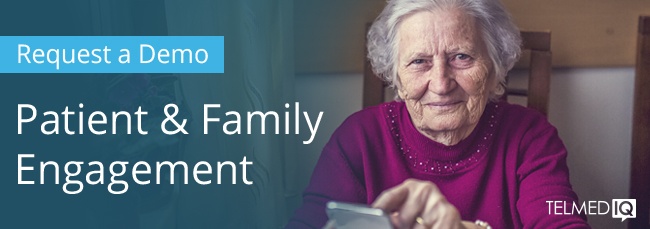As we shift to a value-based care model, healthcare providers are looking for ways to improve quality outcomes while reducing costs. Proactively engaging with patients can help reduce readmissions, reduce no shows, improve outcomes and increase patient satisfaction.
Traditional Communication Effectiveness is Decreasing
As  hospitals implement population health management strategies that include patient stratification based upon the social determinants of health, one of the key challenges is reaching and engaging members of target populations in a cost efficient and effective way.
hospitals implement population health management strategies that include patient stratification based upon the social determinants of health, one of the key challenges is reaching and engaging members of target populations in a cost efficient and effective way.
Traditional communication channels such as telephone calls, emails and voice mails take a lot of people power and are becoming less and less effective. People are increasingly ignoring voice mails and emails alike. Year-over-year, voice mail volumes drop by 8%, with voice mail retrieval rates down by 14% year-to-year.¹ With healthcare, email open rates can be as low as 20%.² As a result, staff are spending more and more time trying to reach patients to pass along time-sensitive care information or to attempt to engage patients in their own health.
Texting provides the lowest barrier of entry for providers to initiate direct and secure communication with patients. Text messages have a 99% open rate, with most messages read in under 5 seconds.³ It’s also one of the only mobile activities that is ubiquitous regardless of age, race, gender and socioeconomic status.
As a communication method, text messaging is also one of the most effective ways to reduce hospital costs and realign staff hours to activities that drive patient outcomes.
Reduce Administrative Overhead with Automated Patient Engagement
Automating aspects of your patient engagement strategy can help eliminate unnecessary staffing costs associated with routine care communication. Patients can be stratified by social determinants of health (SDoH) dimensions or by care workflow, allowing staff to send automated text messages based upon these predetermined criteria, including:
- Preventative Care Interactions: provide pro-active wellness education and well child reminders.
- Patient Preparation: send appointment reminders, wayfinding, recall, and patient preparation instructions precisely when patients need to do something for, or know something about, their interaction.
- Post-Appointment: reduce readmission risk with post-discharge questionnaires, satisfaction surveys, care instructions and prescription reminders.
- Chronic Condition Management: reach out to patients with care plan reminders, ongoing encouragement, links to educational resources, and gather assessment data to expedite intervention.
Once these text message workflows are set up, they execute automatically, allowing nurses and staff to monitor patient interactions and escalate where needed, including via two-way messaging, secure chat session, or phone call. Telmediq helps care teams identify and focus time on the patients that require specialized focus, with notifications when action is required and a full audit trail of alerts.
In this example, nurses can spot check post-discharge surveys to see which patients need follow-up care. This one workflow improvement has been proven to reduce a nurse’s workload by 22%.
The results of such initiatives are helping hospitals across the US reach their value-based care goals, including:
- 75% reduction in time spent calling patients
- 22% reduction in nurse workload by automating post-discharge communication
- 50% improvement in no-show rates without increasing staff burden
- 71% success in proactive well child appointment scheduling
“In the past, case workers would spend countless hours simply trying to get clients on the phone by sending letters or leaving voicemails – often with no response. Now ... many clients respond within minutes of receiving a personalized message.”
— Deb Holmgren President, Portico
Contact us for a staffing cost assessment for communication before, during, and after care.
¹Finally hanging up on voicemail
²Email marketing benchmarks
³50 Texting Statistics That Can Quench Everyone’s Curiosity, Even Mine


